A crucial element of the GIS process involves file conversion trough Converter Tool, and therefore, it ensures that spatial data works seamlessly across various applications and platforms. Among these formats, SHP (Shapefile) stands out as a popular geospatial vector data format because it represents geographical features such as points, lines, and polygons. Moreover, converting SHP to GeoJSON opens the door to easy integration with web-based mapping applications and APIs.
What is SHP File?
In GIS, a popular geographic vector data format is the SHP file (Shapefile). To begin with, it stores attribute data—descriptive information—and at the same time geometry such as points, lines, and polygons. Moreover, SHP files work seamlessly with applications like ArcGIS and QGIS. As a result, they serve frequently for mapping locations, boundaries, and a variety of other geographic datasets. In addition, SHP files often include extra files so that users can store all the associated data in one place.
Online GIS Data Conversion
Key Concept for Conversion SHP to GEOJSON:
The MAPOG Converter Tool offers a convenient platform for converting data between different formats. It’s simple and intuitive interface allows users to complete the conversion process effortlessly. Here is a step-by-step tutorial on converting SHP files to GeoJSON format using MAPOG.
Step-by-Step Guide to Converting SHP to GeoJSON
Step 1: Upload the Data
Begin by selecting the “Process Data” section in MAPOG . From there, choose the “Converter Tool” option.
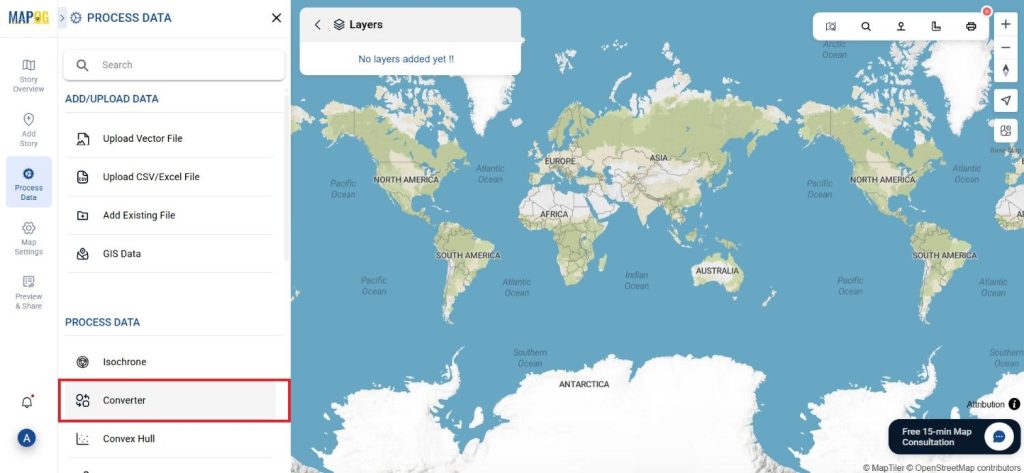
Before uploading your SHP file to the platform, ensure that it is prepared and ready for conversion.
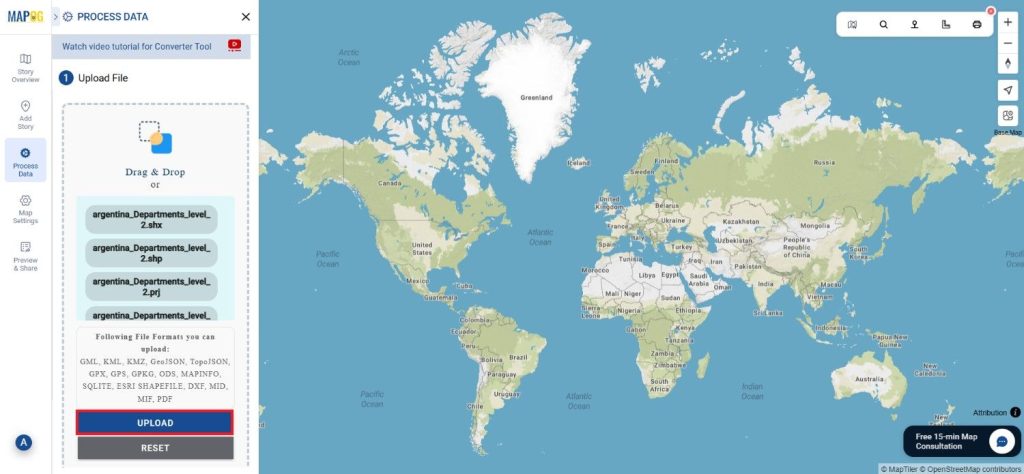
Step 2: Select the Format for Conversion
Next, select GeoJSON as the output format. GeoJSON is widely used in web applications and APIs for representing spatial data, making it ideal for web-based mapping and visualization.
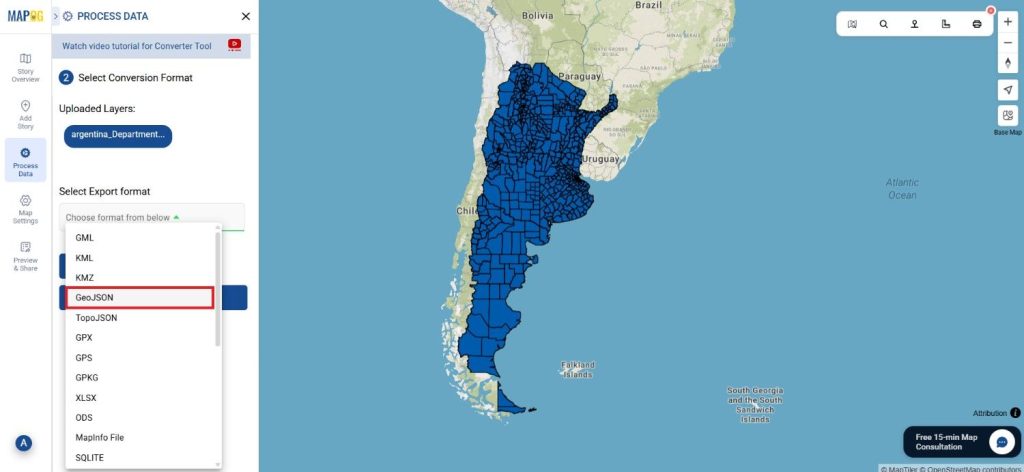
Step 3: Choose the Output Coordinate Reference System (CRS)
Select the appropriate CRS to ensure that your data is correctly represented in the GeoJSON file. Maintaining the correct CRS is essential for accurate spatial data visualization and analysis.
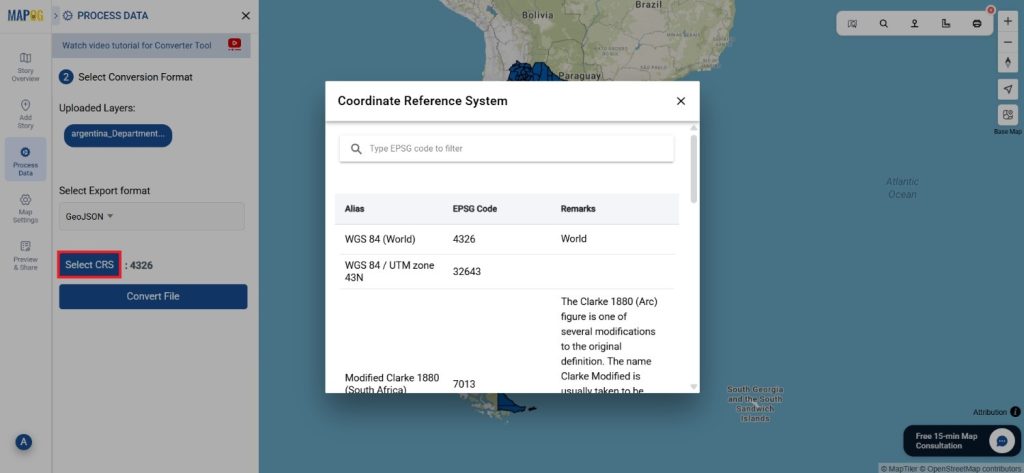
Step 4: Execute the Conversion
Once you’ve chosen the GeoJSON format and set the CRS, initiate the conversion process. The MAPOG tool will efficiently convert your SHP file into GeoJSON format, making it ready for use in GIS mapping applications and other compatible platforms.
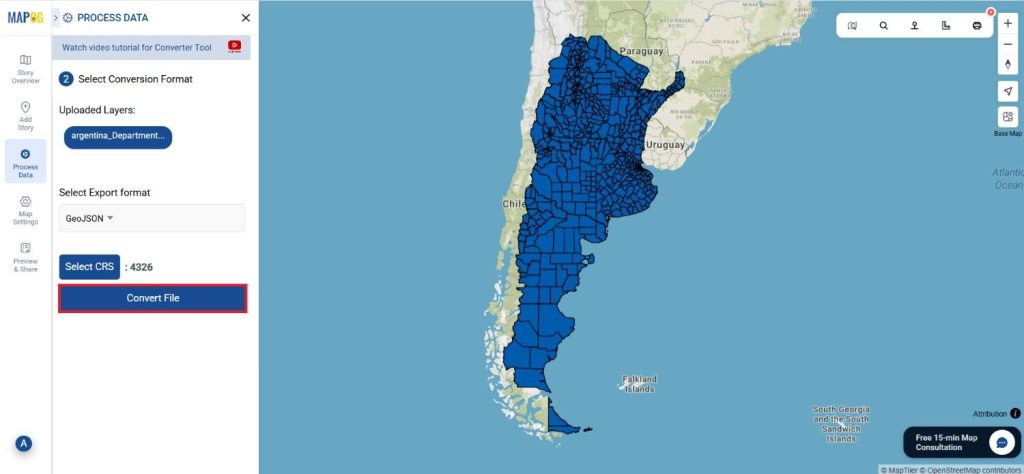
Step 5: Review and Download
After the conversion, review the output. Download the GEOJSON file that prepared for web-based GIS applications and analysis tools.
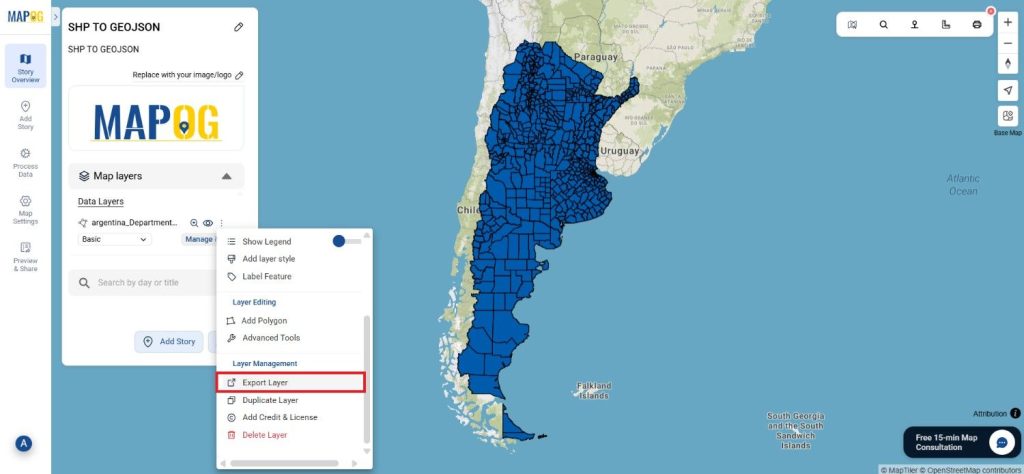
Conclusion:
The MAPOG Converter Tool simplifies the process of converting GIS data between different formats, making it an invaluable resource for GIS professionals and developers. By following these straightforward steps, you can easily convert SHP files to GeoJSON format, ensuring your spatial data is ready for web-based mapping and geospatial analysis.
Additional Tools for Further Analysis:
With MAPOG’s versatile toolkit, you can effortlessly upload vectors and upload Excel or CSV data, incorporate existing layers, perform polygon splitting, use the converter for various formats, calculate isochrones, and utilize the Export Tool.
Learn About MAPOG:
MAPOG is perfect for people who want to use visually striking and interactive maps to make their data come to life. It lets you build engaging narratives by connecting maps with visuals like text and images. Producing shareable content is made easy with MAPOG, whether you’re marketing a project, giving a tour or presenting research.
Here are some other blogs you might be interested in:
- Convert Online GIS data : KML to PDF file
- Converting KML to GeoTIFF , Online Gis Data Converter
- Converting KMZ to SHP : Online GIS Data Conversion
- Converting TopoJSON to SHP Online : GIS Data Converter
- Converting GeoJSON to TopoJSON with MAPOG
- Converting GeoJSON to CSV with MAPOG
- Converting KMZ to KML with MAPOG
- Converting GML to KML with MAPOG
- Convert KMZ to TopoJSON Online
- Converting KMZ to GeoJSON Online
- Convert KML to MID Online
- Online Conversion KML to MIF